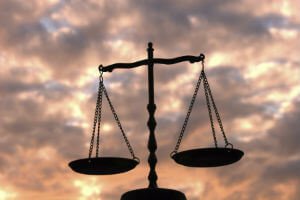Winter weather brings snow, ice, sub-zero temperatures, and liability to Indiana residents and business owners. Snow alone brings with it many possibilities for slip and fall, collisions, property damage and injury. Add in a negligent business owner or poorly maintained facility and a simple crash or fall is now a legal action with thousands of dollars in the balance.
Despite the high stakes, the personal injury issues unique to the winter season can muddy the issue of liability or fault for the accident. Fortunately, Indiana law provides a solution for those winter accidents that do not have clear-cut solutions.
Pfeifer, Morgan & Stesiak’s team of accomplished South Bend premises liability attorneys has provided this guide to help you determine when a property owner might be liable when an accident occurs on his or her property.
Not Entirely At Fault
Personal injury laws are designed to ensure that the victims of such accidents are compensated for their injuries and property loss. Many states have laws that allow the courts to split the liability for an accident, according to the evidence presented. The result is the court declaring the victim and the property owner or defendant both at fault. A percentage is assigned which could result in equal fault 50% and 50% or with one person being more at fault than the other.
Fault Percentage
When shared fault is determined and a percentage of fault assigned to each party, the question of responsibility for damage, medical expenses and other costs is answered instantly. The medical, repair and replacement bills are all split between the defendant and plaintiff (the victim in the case). The respective insurance companies pick up the tabs.
Complicating Factors
Shared liability is a way to acknowledge that no one person caused the accident. This is especially important in winter weather when the snow and ice create conditions that are beyond the control of the drivers on the road. Blowing snow and icy roads are just a few natural hazards that can create a universal problem. One person failing to leave enough stopping distance cars is compounded by another driving over-cautiously or becoming too distracted by the weather conditions to use proper turn signals. Both actions caused the accident, and thus both drivers are at fault.
Shared Liability vs. Negligence
Negligence is the one thing that can knock shared liability off the table, especially in premises liability cases. Simply put, negligence occurs when the property owner and/or defendant is aware of a hazard but fails to take the necessary precautions to prevent injury. The plaintiff’s attorneys must prove that the defendant was negligent in order to avoid shared liability. A parking lot that remains unsalted days after an ice storm is negligence, failing to remove snow from the sidewalks surrounding a business long after a blizzard has passed through Indiana is also negligence.
The plaintiff can also claim negligence if she can prove that the defendant was warned about a hazard, such as a large patch of ice on the steps leading into the business, but decided not to apply a deicer. Proving negligence swings the burden of proof further onto the plaintiff, but means no liability for the plaintiff if she wins the case.
Care in driving, walking and going about your daily routine is imperative during Indiana’s winter season. You should always exercise caution, but be ready to consult with an experienced South Bend personal injury attorney if you are injured in an accident. You never known when you find yourself caught within the gray areas of Indiana’s premises liability law.



